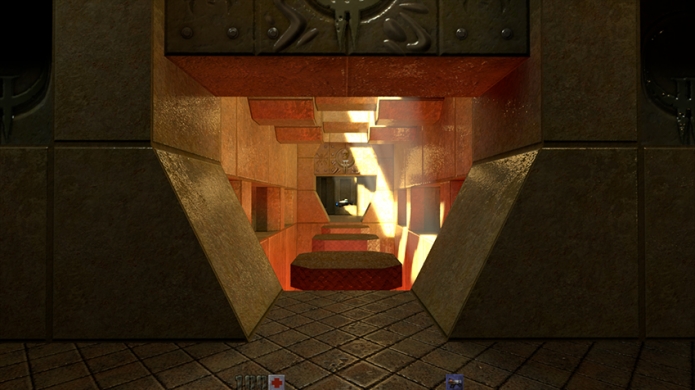Redneckerz
Those long posts don't cover that red neck boy
Introduction:
Remember this thread? Christoph Schied released Quake 2 VKPT back in January, delivering a path traced solution to a classic game, free for download. Digital Foundry ran with it and did a video piece. At GTC 2019, Nvidia unveiled Quake 2 RTX, an improved take on Quake 2 VKPT, which will be released on Github soon.
PR Blurb:
2VKPT is the basis for future research, and a platform for more ray tracing goodness. So, we reached out shortly after Q2VKPT’s release to ask if our own ray tracing experts, many of whom he worked with previously, could develop some additions. He said yes, and this week NVIDIA is presenting the newly-created Quake II RTX with Christoph at GDC 2019.
Running on a Vulkan renderer, with support for Linux, Quake II RTX is a pure ray-traced game. That means all lighting, reflections, shadows and VFX are ray-traced, with no traditional effects or techniques utilized.
“But what’s new with Quake II RTX compared to Q2VKPT?”, you ask. A lot. We’ve introduced real-time, controllable time of day lighting, with accurate sunlight and indirect illumination; refraction on water and glass; emissive, reflective and transparent surfaces; normal and roughness maps for added surface detail; particle and laser effects for weapons; procedural environment maps featuring mountains, sky and clouds, which are updated when the time of day is changed; a flare gun for illuminating dark corners where enemies lurk; an improved denoiser; SLI support (hands-up if you rolled with Voodoo 2 SLI back in the day); Quake 2 XP high-detail weapons, models and textures; optional NVIDIA Flow fire, smoke and particle effects, and much more!
Looking at the screenshots, you’ll see physically-based materials with reflections; refraction, emissive textures, hard and soft shadows; indirect diffuse lighting; dynamic effect lighting; dynamic weapon effects; and real-time controllable time of day. All running in real-time for the first time on a GeForce RTX graphics card.
What’s more, Quake II RTX is running with NVIDIA VKRay (also known as VK_NV_ray_tracing), a Vulkan extension that allows any developer using Vulkan to add ray tracing effects to their games. VKRay supports all the goodies seen here and in RTX ray-traced titles, and is game ready for Vulkan releases on Linux and other supported Vulkan platforms.
Screens:









Offscreen video (Official video will follow):
More info:
https://www.nvidia.com/en-us/geforce/news/quake-ii-rtx-ray-tracing-vulkan-vkray-geforce-rtx/
http://brechpunkt.de/q2vkpt/
Remember this thread? Christoph Schied released Quake 2 VKPT back in January, delivering a path traced solution to a classic game, free for download. Digital Foundry ran with it and did a video piece. At GTC 2019, Nvidia unveiled Quake 2 RTX, an improved take on Quake 2 VKPT, which will be released on Github soon.
PR Blurb:
2VKPT is the basis for future research, and a platform for more ray tracing goodness. So, we reached out shortly after Q2VKPT’s release to ask if our own ray tracing experts, many of whom he worked with previously, could develop some additions. He said yes, and this week NVIDIA is presenting the newly-created Quake II RTX with Christoph at GDC 2019.
Running on a Vulkan renderer, with support for Linux, Quake II RTX is a pure ray-traced game. That means all lighting, reflections, shadows and VFX are ray-traced, with no traditional effects or techniques utilized.
“But what’s new with Quake II RTX compared to Q2VKPT?”, you ask. A lot. We’ve introduced real-time, controllable time of day lighting, with accurate sunlight and indirect illumination; refraction on water and glass; emissive, reflective and transparent surfaces; normal and roughness maps for added surface detail; particle and laser effects for weapons; procedural environment maps featuring mountains, sky and clouds, which are updated when the time of day is changed; a flare gun for illuminating dark corners where enemies lurk; an improved denoiser; SLI support (hands-up if you rolled with Voodoo 2 SLI back in the day); Quake 2 XP high-detail weapons, models and textures; optional NVIDIA Flow fire, smoke and particle effects, and much more!
Looking at the screenshots, you’ll see physically-based materials with reflections; refraction, emissive textures, hard and soft shadows; indirect diffuse lighting; dynamic effect lighting; dynamic weapon effects; and real-time controllable time of day. All running in real-time for the first time on a GeForce RTX graphics card.
What’s more, Quake II RTX is running with NVIDIA VKRay (also known as VK_NV_ray_tracing), a Vulkan extension that allows any developer using Vulkan to add ray tracing effects to their games. VKRay supports all the goodies seen here and in RTX ray-traced titles, and is game ready for Vulkan releases on Linux and other supported Vulkan platforms.
Screens:
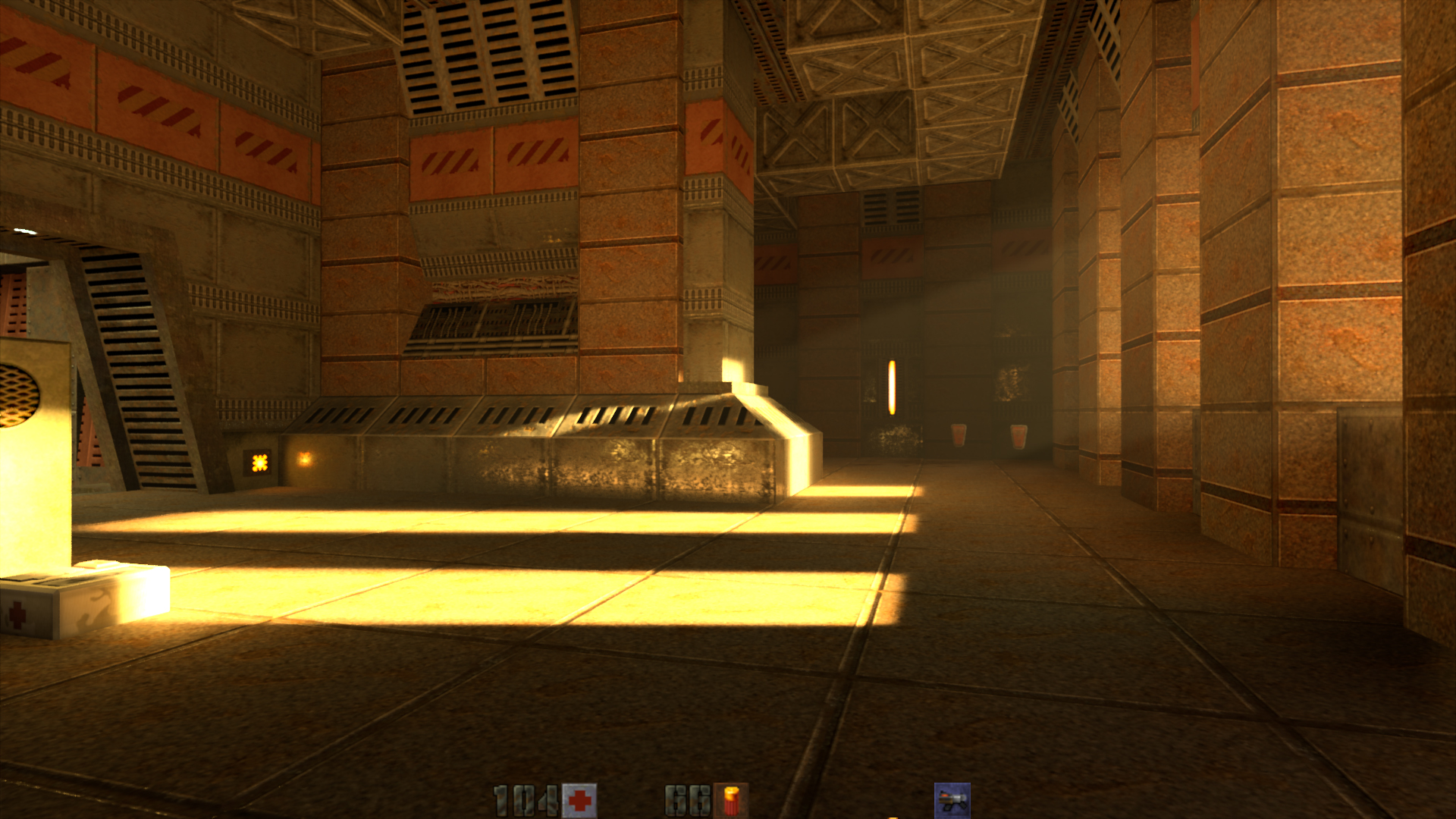
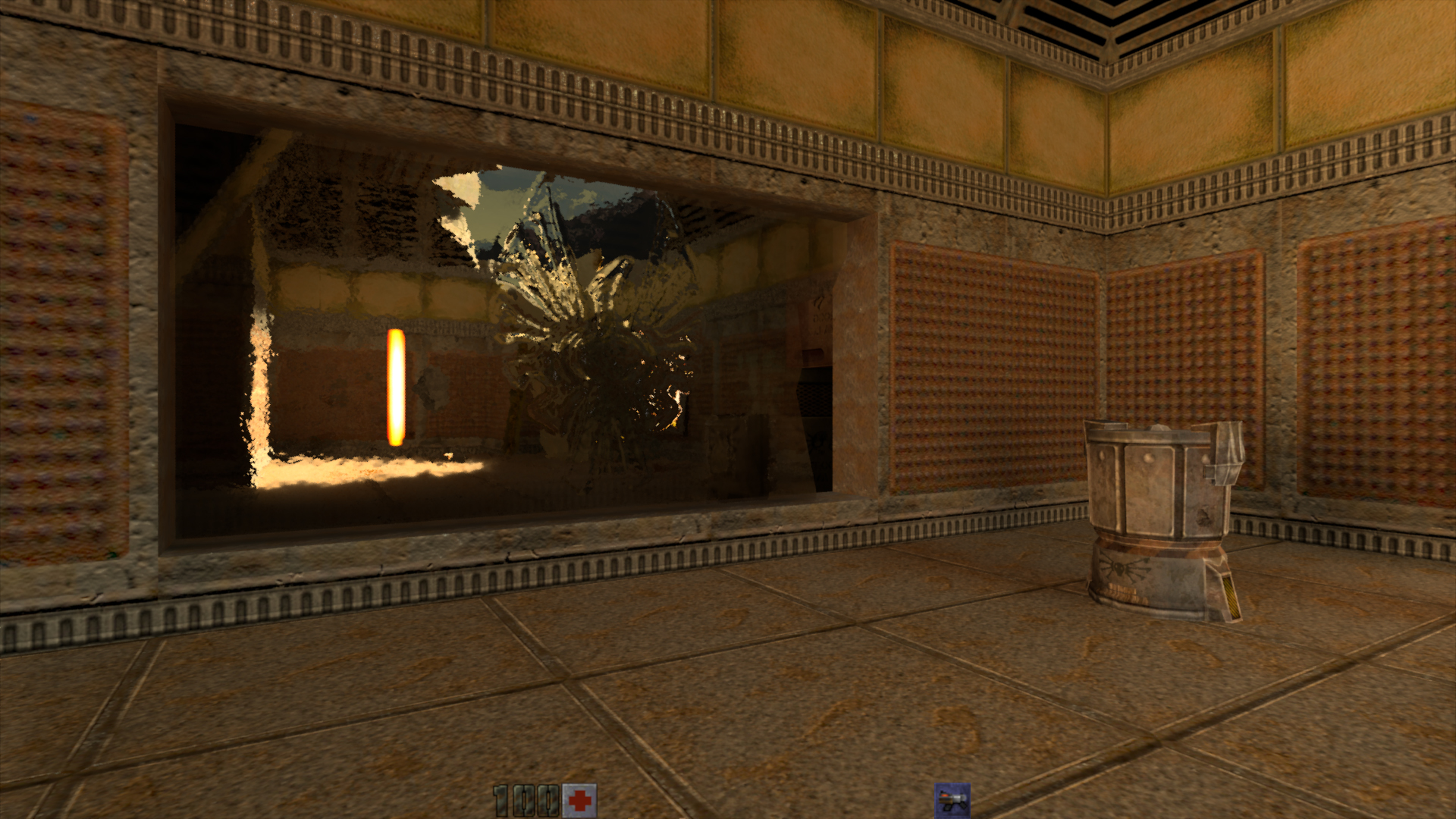
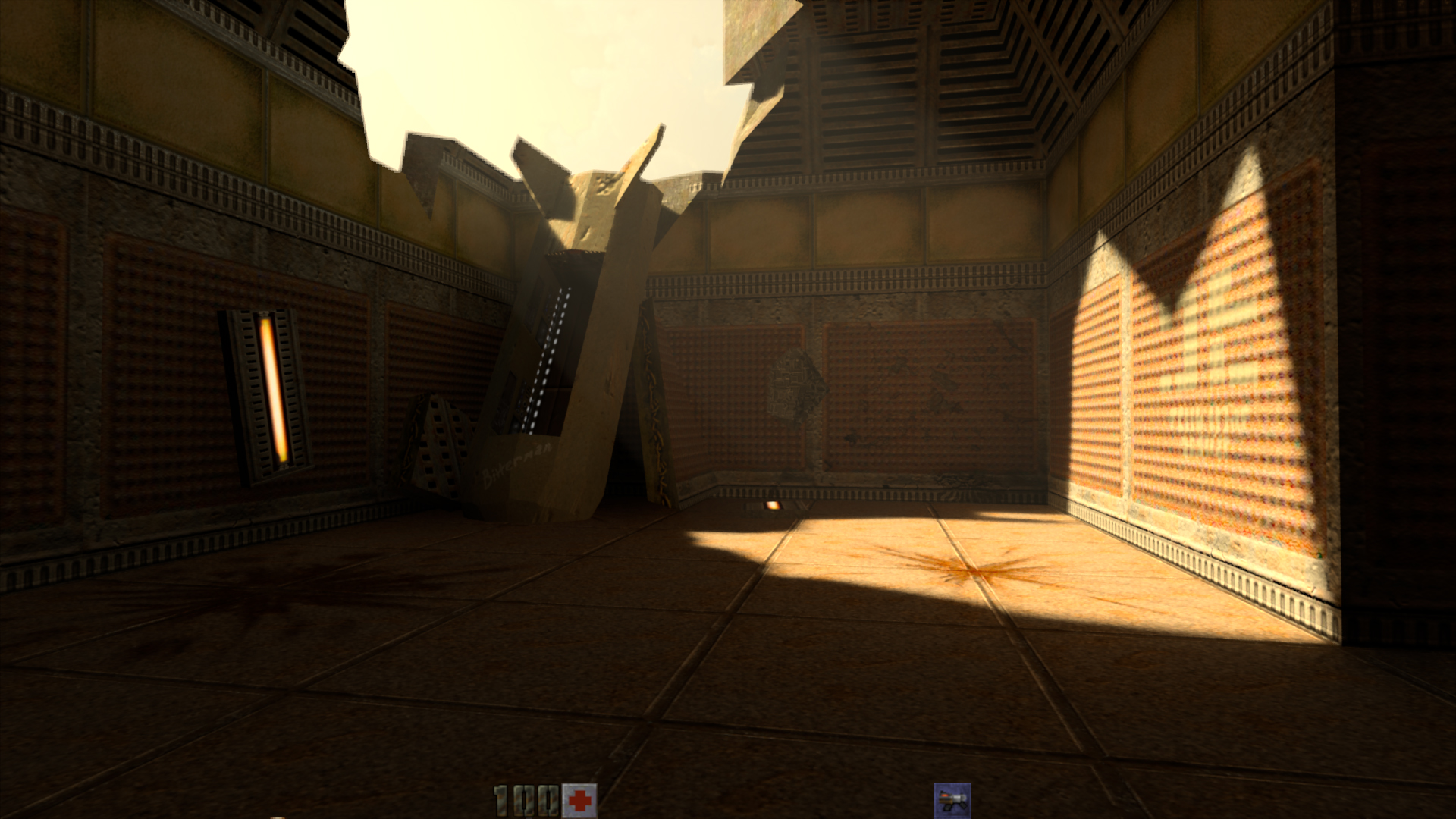
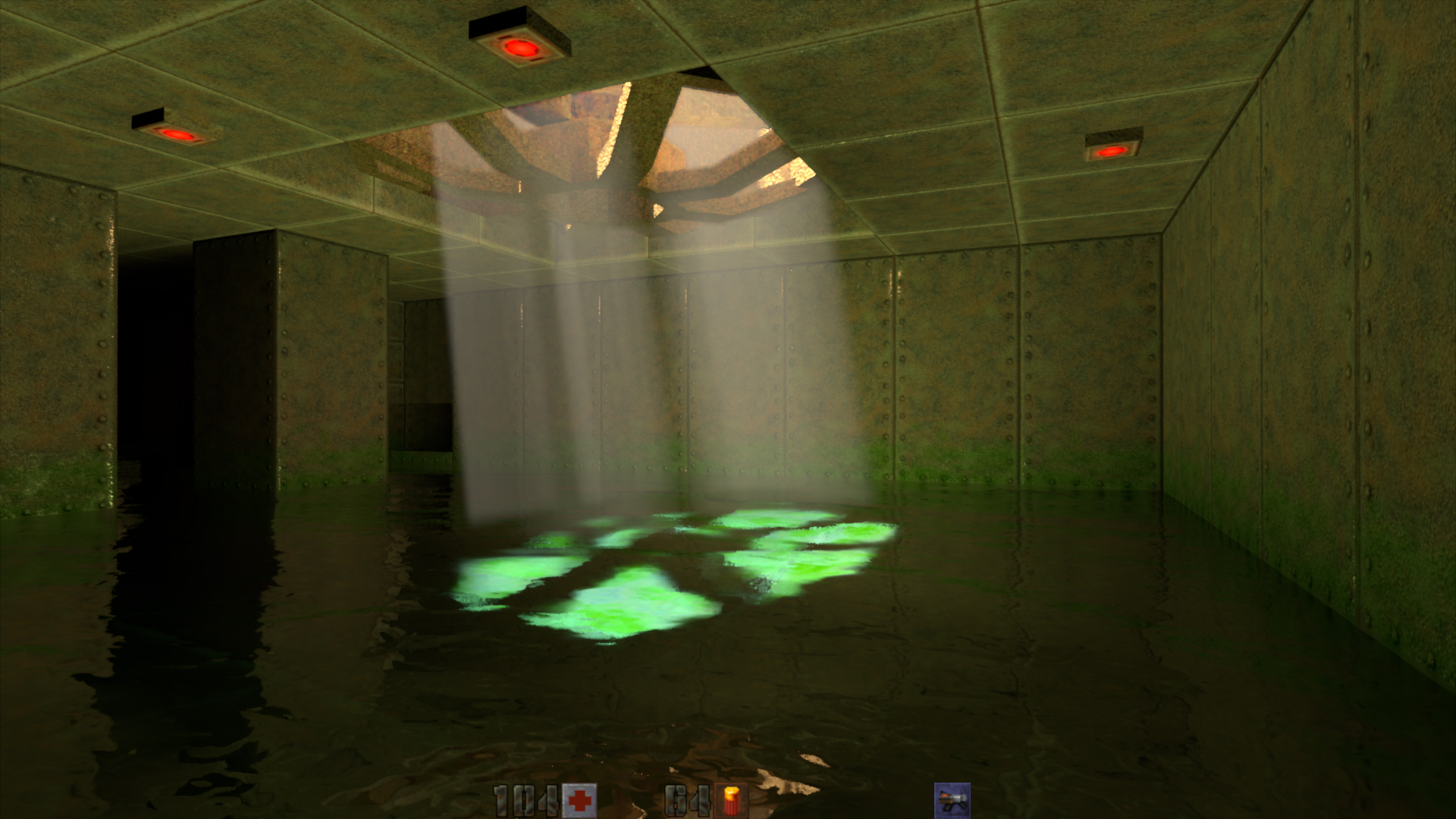
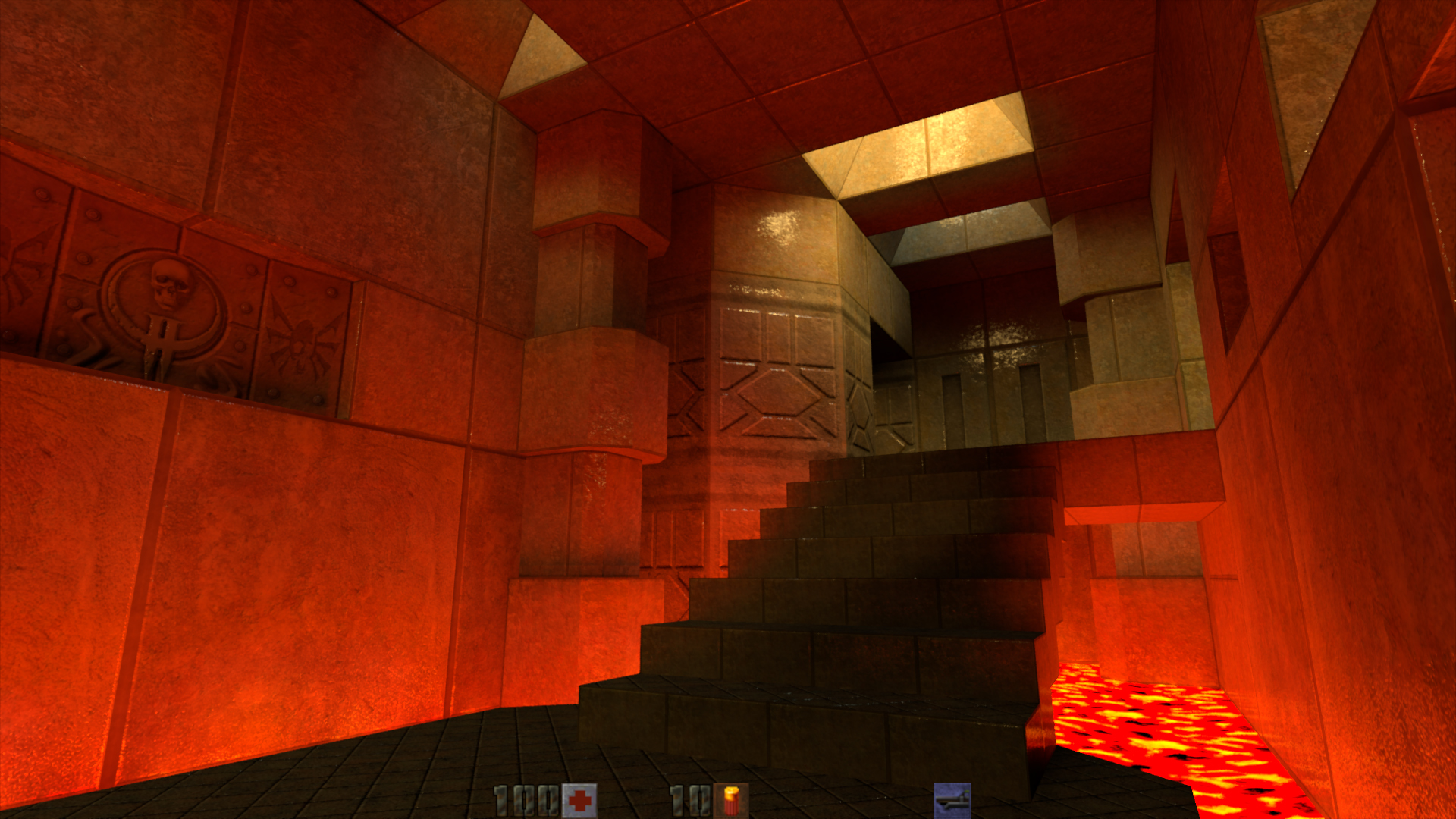
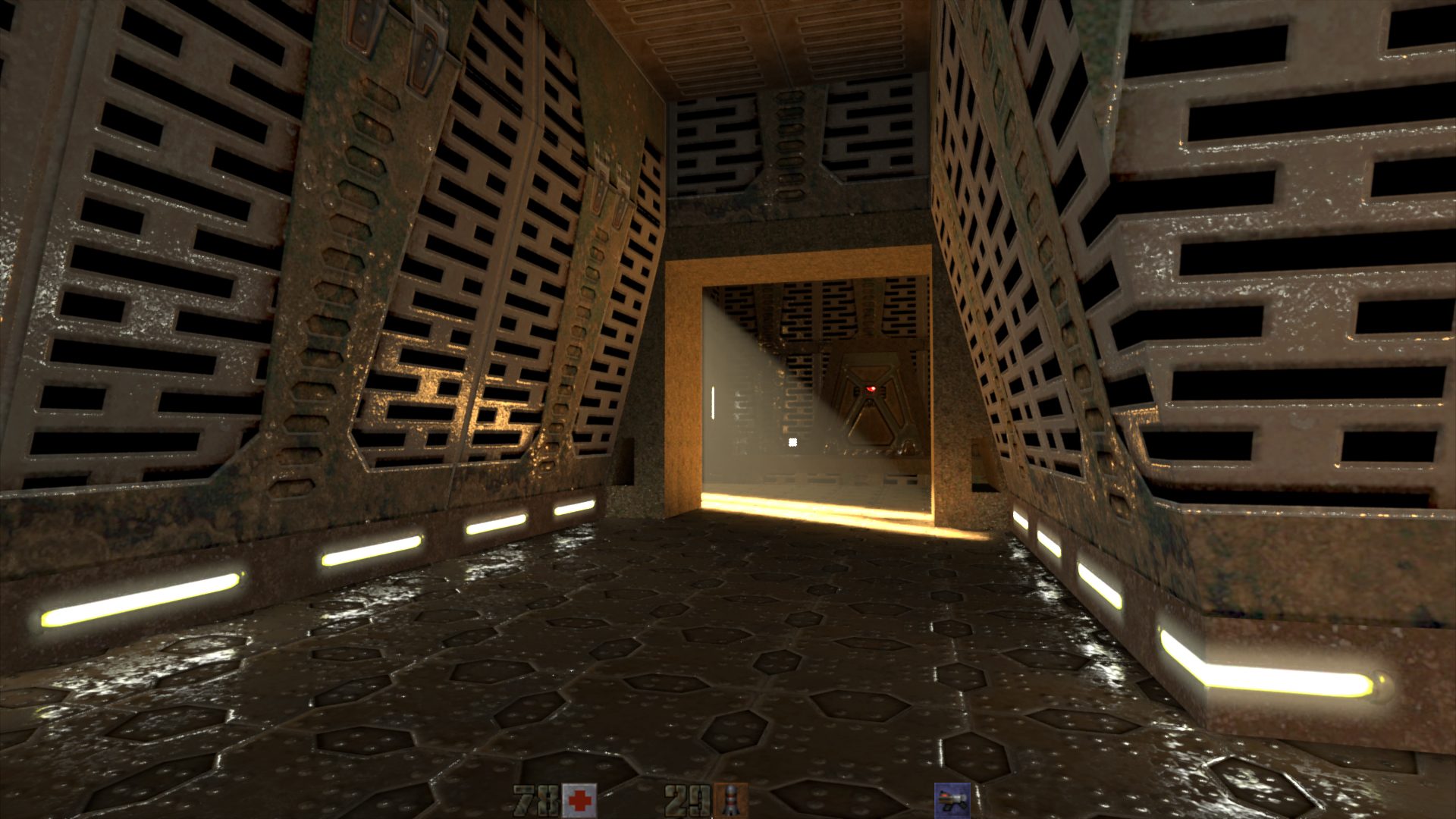
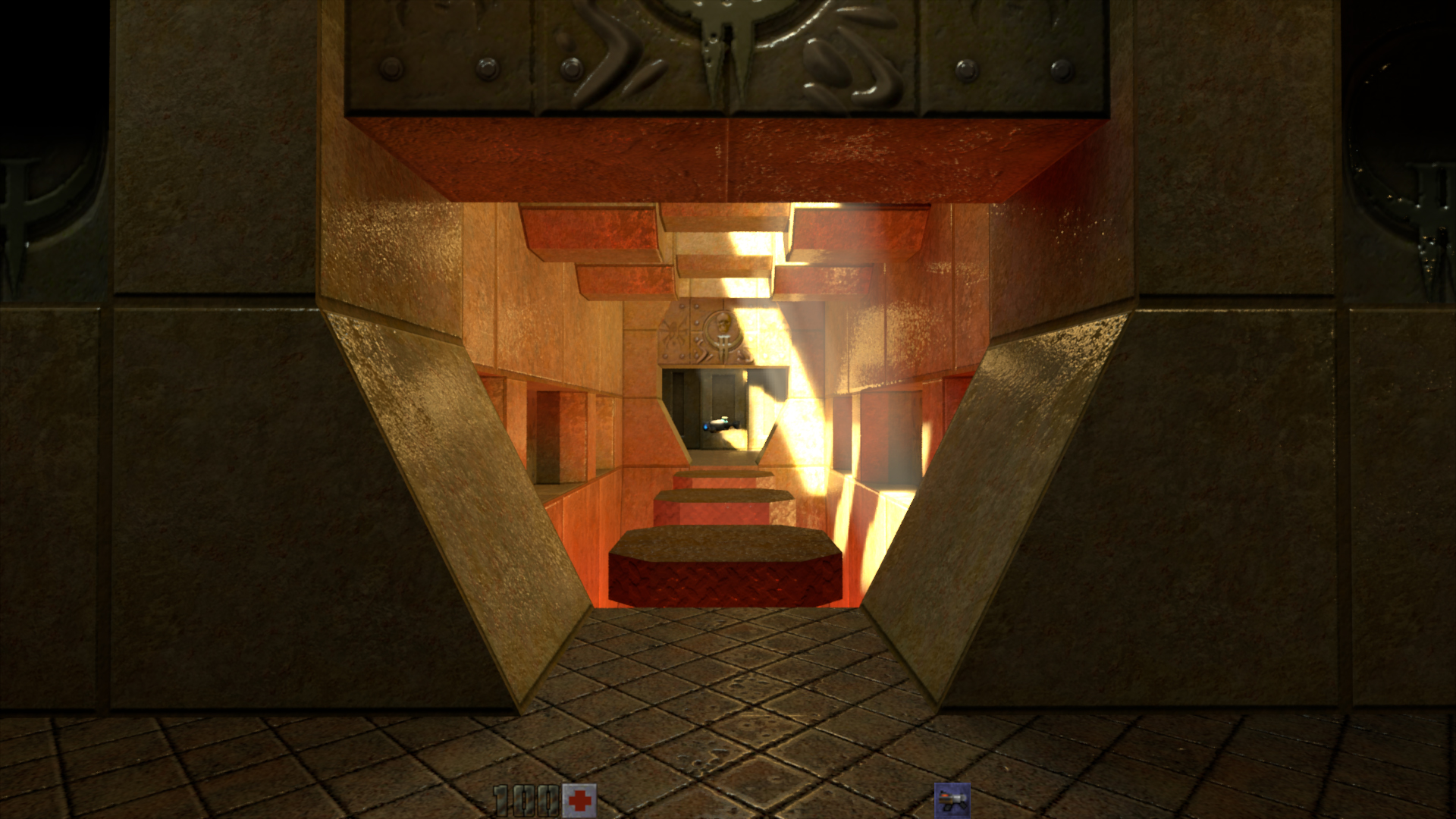
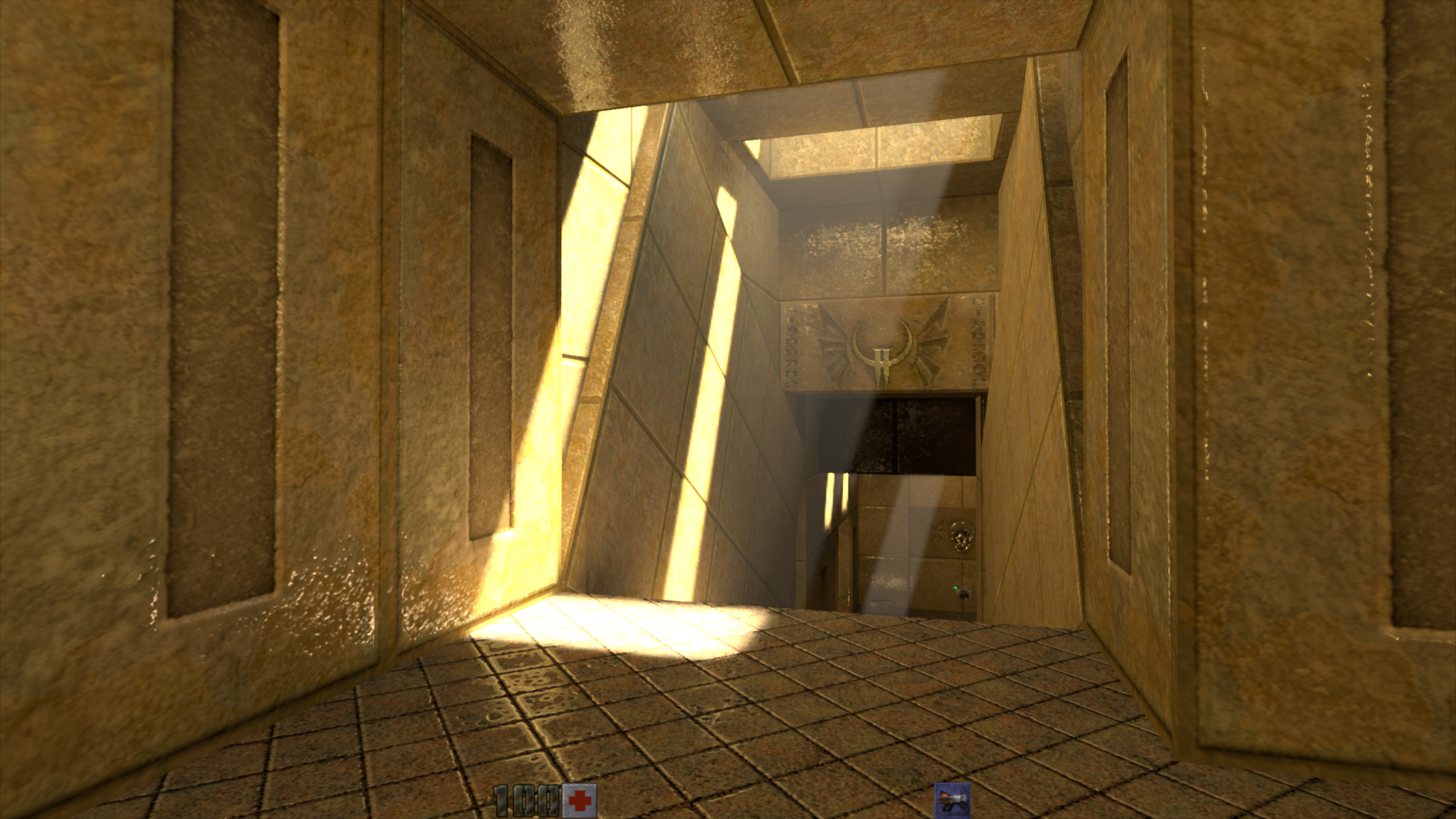
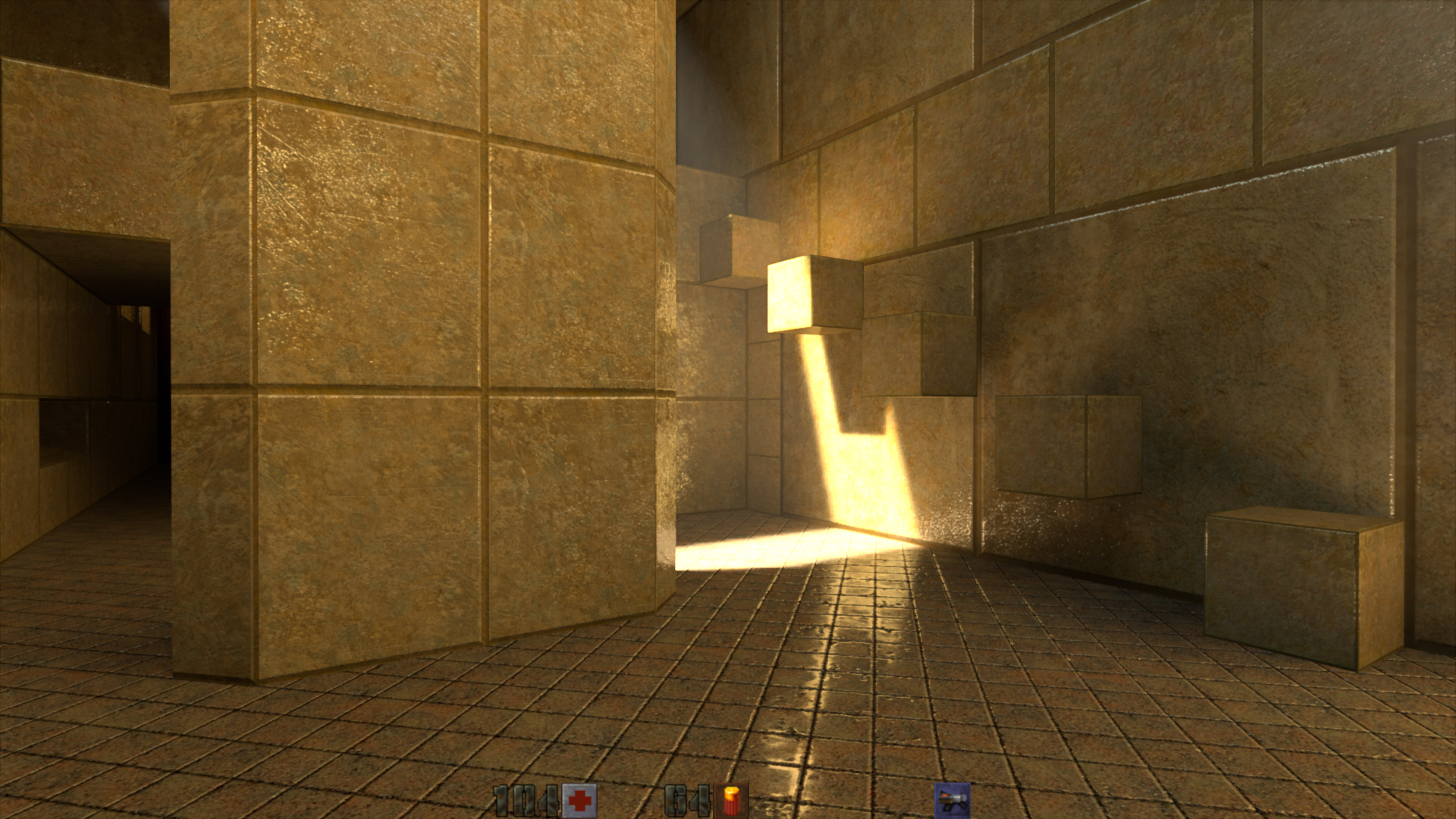
Offscreen video (Official video will follow):
More info:
https://www.nvidia.com/en-us/geforce/news/quake-ii-rtx-ray-tracing-vulkan-vkray-geforce-rtx/
http://brechpunkt.de/q2vkpt/
Last edited:



